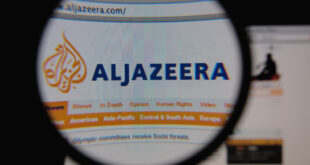
The intelligence that caused the White House to escalate its warnings about a threat from Iran came from photographs of missiles on small boats in the Persian Gulf that were put on board by Iranian paramilitary forces, three American officials said.
Overhead imagery showed fully assembled missiles, stoking fears that the Islamic Revolutionary Guards Corps would fire them at United States naval ships. Additional pieces of intelligence picked up threats against commercial shipping and potential attacks by Arab militias with Iran ties on American troops in Iraq.
But just how alarmed the Trump administration should be over the new intelligence is a subject of fierce debate among the White House, the Pentagon, the C.I.A. and America’s allies.
The photographs presented a different kind of threat than previously seen from Iran, said the three officials, who spoke on the condition of anonymity because they were not authorized to talk about it publicly. Taken with the other intelligence, the photographs could indicate that Iran is preparing to attack United States forces. That is the view of John R. Bolton, President Trump’s hard-line national security adviser, and Secretary of State Mike Pompeo.
But other officials — including Europeans, Iraqis, members of both parties in Congress and some senior officials within the Trump administration — said Iran’s moves might mostly be defensive against what Tehran believes are provocative acts by Washington.
Either way, the questions about the underlying intelligence, and complaints by lawmakers that they had not been briefed on it, reflect a deep mistrust of Mr. Trump’s national security team.
Working off the new intelligence, the State Department on Wednesday ordered a partial evacuation of the United States Embassy in Baghdad and a consulate in Iraqi Kurdistan, a move that one senior American official said was an overreaction to the intelligence and could possibly do more to endanger diplomats than to keep them safe.
Speaker Nancy Pelosi of California, in a closed-door meeting of House Democrats, criticized the administration’s lack of transparency on the intelligence, according to a Democratic aide. Ms. Pelosi also said that the administration must consult Congress before taking any action.
Ms. Pelosi spoke hours after the evacuation of embassy personnel was ordered by Mr. Pompeo, who as a congressman was one of the fiercest critics of the Obama administration’s handling of the 2012 attacks on the American diplomatic mission and annex in Benghazi, Libya.
But the senior American official said Mr. Pompeo was overreacting, and Iraqi officials said the threat level portrayed in the intelligence was not urgent enough.
Intelligence officials are set to meet on Thursday with senior congressional leaders for a briefing on the new intelligence about Iran. Nine American national security and congressional officials discussed the intelligence and the closed-door talks about it on the condition of anonymity because they were not authorized to speak about them publicly.
Until recently, American government officials had said that Iran was continuing its usual support to Arab militias in the region, but was not seeking a fight.
That shifted with the new intelligence on May 3, changing the Pentagon’s assessment of the immediacy of the threat. Reacting to that information, the military’s Central Command asked that an aircraft carrier and bombers be sent to the Persian Gulf, rebuilding a show of deterrent force that some officials believed had been eroded by recent troop drawdowns.
On May 5, the White House sent Mr. Bolton to announce that the aircraft carrier Abraham Lincoln would sail to the gulf sooner than expected. Choosing Mr. Bolton, who is a longtime advocate of regime change in Iran, to deliver that message fueled skepticism among allies and congressional Democrats.
As military officials struggled to show that the threat from Iran was growing, intelligence officials declassified a photograph of one of the small boats, called dhows, carrying what was described as a functional Iranian missile.
The Pentagon has not released the photograph. On its own, two American officials said, the photograph was not compelling enough to convince the American public and lawmakers, or foreign allies, of the new Iranian threat. But releasing other supporting images could compromise secret sources and methods of collecting intelligence, the officials said.
The other photographs, which remain classified, show the Revolutionary Guards loading missiles onto the boats at several Iranian ports, the two American officials said. It is believed the boats are under the Revolutionary Guards’s control.
CNN first reported that Iranian missiles were being moved onto ships last week. But new details have emerged in recent days, and American officials have concluded that Iran did not intend to transfer the weapons to a foreign militia.
Combined with other intelligence, the photographs signaled a troubling Iranian mobilization of forces that officials said put American ships, bases and commercial vessels at risk.
Adding to that concern, the United States recently learned of conversations between the Revolutionary Guards and foreign militias discussing attacks on American troops and diplomats in Iraq. The conversations themselves are nothing new, but the recent discussions were held with unusual frequency and included specifics about strikes on American targets.
American officials said they have also collected intelligence about Iran targeting commercial shipping, prompting a warning to mariners issued last Friday. That was one of the reasons that led American officials to suspect Iran was behind this week’s sabotage of four tankers off the coast of the United Arab Emirates. The officials said they do not have conclusive forensic analysis that shows Iran was to blame.
In a sign of the rising tensions over the handling of the Iran threat, a senior British military official who is deputy commander of the American-led coalition fighting the Islamic State said Tuesday that he saw no increased risk.
Senator Marco Rubio, Republican of Florida, who sits on the Foreign Relations and Intelligence Committees and who was briefed last week on the new intelligence, said on Wednesday that while he did not want a war with Iran, the United States must respond if attacked.
“I’ve been here eight years. This is, by far, the single most imminent potential conflict of this significance that I have been around,” Mr. Rubio said. “This is real. This is not a fake thing. It’s not being made up by somebody. This president does not even want to have troops in the Middle East.”
But Senator Chuck Schumer of New York, the Democratic leader, said flaws in the Trump administration’s approach were evidenced in an article by The New York Times that reported on Pentagon plans for sending as many as 120,000 troops to the Middle East if hostilities with Iran escalated.
“Did we learn the lessons of the last decade?” Mr. Schumer said on the Senate floor. “There is an alarming lack of clarity here, there’s a lack of strategy, and there’s a lack of consultation. The president ought to come up with a strategy and make it clear to Congress.”
Iran began mobilizing its forces after Washington issued new economic sanctions against the country, moved to stop nations from buying Iranian oil and designated the Revolutionary Guards, an arm of the Iranian military, a terrorist group, two American officials said.
Hanging over the current disagreement is the debate over the Iraq war and, specifically, Secretary of State Colin L. Powell’s address to the United Nations in 2003. Mr. Powell’s presentation included fuzzy images and partial communications intercepts, and detailed what came to be understood as wildly wrong assessments about the Iraqi government’s illicit weapons.
In the debate over Iran, Representative Seth Moulton, Democrat of Massachusetts, has introduced legislation to require the Trump administration to get congressional approval before “engaging in hostilities” with Iran. In April, Senator Rand Paul, Republican of Kentucky, pressed Mr. Pompeo during a hearing for the same commitment, but the secretary of state deflected the request.
Most Republicans signaled they supported the administration’s tough line. “Iran seems to be more aggressive, and we have to push back,” Senator Richard C. Shelby, Republican of Alabama and the chairman of the Appropriations Committee, said after meeting with intelligence officials. “We cannot give them a lot of space.”
Divisions over the intelligence extended to American allies.
Troops from Germany and the Netherlands were pulled back to bases in Iraq. Spanish defense officials, to avoid entanglement in any upcoming conflict with Iran, withdrew a frigate that was part of the American-led carrier strike group heading to the Persian Gulf. Training efforts by France and the North Atlantic Treaty Organization are continuing as normal.
The State Department ordered “nonemergency U.S. government employees” at both the embassy in Baghdad and the consulate in Erbil, the Kurdish capital, to leave the country. The order applied primarily to full-time diplomats posted to Iraq; an embassy statement said that visa services in Iraq would be suspended as a result. Contractors who provide security, food and other such services will remain in place for now.
Mr. Pompeo shared some details of the intelligence with Iraqi leaders on May 7 when he made a surprise visit to Baghdad. But American officials in Washington said the most delicate intelligence was not shared with the Iraqis for fear their agencies have been penetrated by Iranian spies.
Tensions with Iran have been rising since May 2018, when Mr. Trump withdrew the United States from the 2015 nuclear deal that world powers reached with Tehran. American sanctions were reimposed in November, weakening the Iranian economy — perhaps more quickly than expected.
 Eurasia Press & News
Eurasia Press & News

